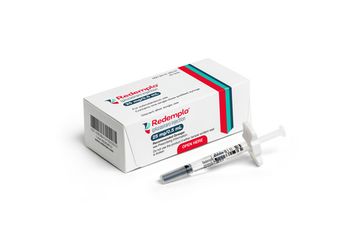
Cosentyx Approved as an IV Formulation
The IV formulation has a wholesale acquisition cost of $2,115 per vial and will be available in the fourth quarter.
The FDA has
The new IV administration option will be available in the fourth quarter of 2023. The IV formulation of Cosentyx is a monthly 30-minute, weight-based dosing option. Cosentyx, which targets and blocks interleukin-17A (IL-17A), is also available as a self-injection. The list price for the injection formulation is $6,924.26 for a month’s supply.
The IV formulation has a wholesale acquisition cost of $2,115 per vial, which a company spokesperson said is priced in line with other IV biologics in its class. “We’re working closely with healthcare systems and payers to establish medical policies and coverage, based on the clinical value and patient benefit that Cosentyx offers,” the spokesperson said.
Eligible patients with commercial insurance could pay as little as $0 out of pocket through the Novartis copay assistance program.
Novartis developed the IV formulation of Cosentyx in response to the need for additional choices for patients who may not be comfortable with subcutaneous self-injection, prefer in-office administration by their healthcare provider, or might be interested in a different mechanism of action than other biologic IV therapies for these conditions that does not include a boxed warning or require pre-medication or lab monitoring.
“A significant portion of the millions of PsA, AS and nr-axSpA patients in the US require treatment through IV infusions for a variety of reasons, including not being comfortable with self-injections or simply preferring to have treatments administered in their healthcare provider’s office,” Philip J. Mease, M.D., clinical professor at the University of Washington School of Medicine and director of Rheumatology Research at the Swedish Medical Center in Seattle, said in a press release.
Novartis partnered with the FDA using the
Using this approach, the dose is modeled from the maximum concentration of the 300 mg subcutaneous injection, examined in 11 previous clinical studies for Cosentyx. At the approved dose of 1.75mg/kg every four weeks, with or without a loading dose, the level of drug in the blood was found to be within the range of the estimated steady-state concentrations as Cosentyx 150 mg and 300 mg when administered subcutaneously, according to the Novartis spokesperson.
Newsletter
Get the latest industry news, event updates, and more from Managed healthcare Executive.




















































